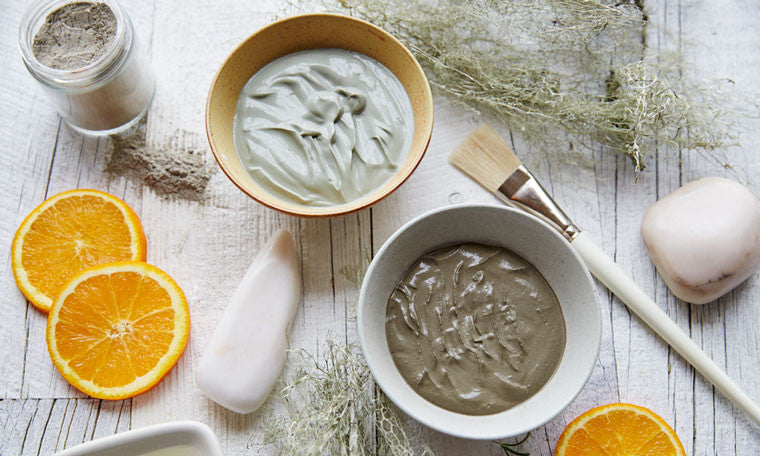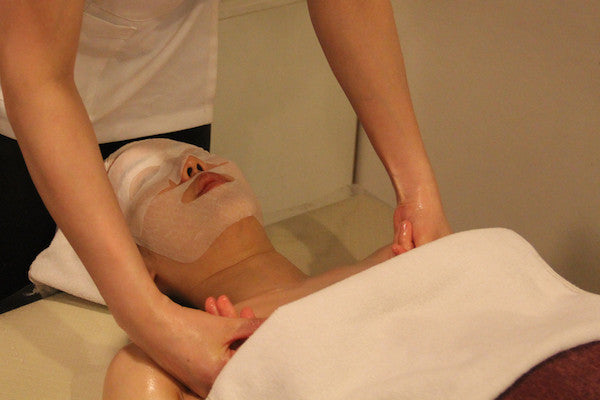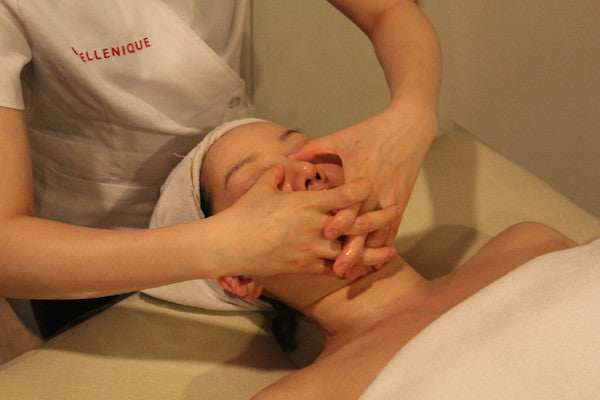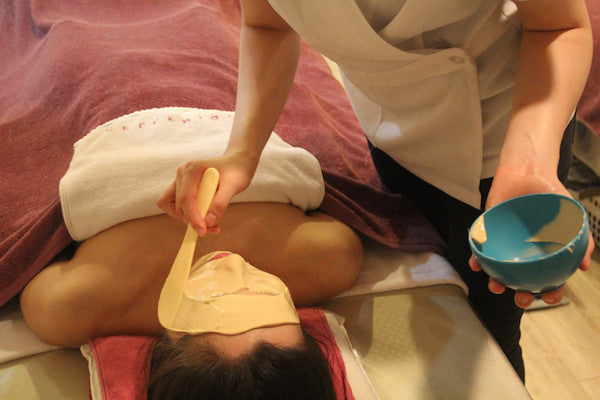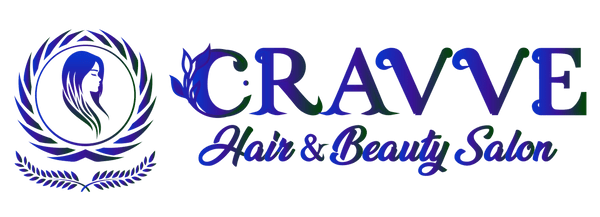The Korean Maintenance Facial
The Korean Maintenance Facial
Couldn't load pickup availability
When it comes to spas and facials, you won’t find a typical Korean woman lounging around all day, wrapped in seaweed and peeling 24K gold off her face. The Korean women I know opt for maintenance over indulgence. They frequent their friendly neighborhood skin shops, which can range from dingy rooms crammed with massage tables to spacious and shiny franchises—they’re literally called “skin maintenance shops,” (피부관리실). Women don’t take a whole day off and go indulge at the spa; they fit in their regular tune-ups on their way home from work (there’s even an app called Hey Beauty for squeezing in last-minute beauty appointments nearby). Best of all, it’s efficient and affordable, as all regular maintenance should be.
I’ve lived in six different neighborhoods in Seoul as an adult, and no matter where I live, a skin maintenance is never to be neglected.
Cleansing and Exfoliating
So you show up, take off your shoes and shirt, and lie down on a cushy table. If you’re wearing heavy eye makeup or mascara, the aesthetician may place cotton pads soaked in makeup remover on your eyelids while working the rest of face with cleansing cream. After freshening up with a toner, it’s time to exfoliate. Depending on the season and skin condition, exfoliation is preceded by a few minutes under a facial steamer. I’ve never had my face exfoliated by scrubs or other granular exfoliators in Korea. Instead, skincare shops opt for a gentler cream-based enzyme exfoliator that’s especially great for sensitive skin. Depending on how clogged my pores are, they sometimes get a little help from an ultrasonic skin scrubber.
At-home tip: Open up your pores by taking a hot bath or shower. When cleansing, don’t forget to go against the grain, in the opposite direction (up) of direction the vellus hair on your face grows. Popularized by skin-obsessed celebrities, “peach fuzz washing” is a trending search query in Korea.
Sheet mask
The first mask is simple. After a generous layer of ampoule or moisturizing essence, a top and bottom sheet mask is stretched taut over the face to seal in the moisture. While I’m masking, the maintenance continues to other parts of the body.
At-home tip: Two-part masks tend to be pricier than a single sheet, but you’ll always get a better “fit.” You can recreate this at home by cutting a dry DIY mask sheet in half and experimenting with a combination of your favorite products.
Décolletage massage
In Korea, there’s a reason you’re asked to change into a loose tube gown for a facial. Beauty experts say your face actually starts at your chest and ends at the scalp, so it shouldn’t be a surprise that one of the highlights of the facial doesn’t actually happen on the face. Using massage oil, aestheticians expertly massage the shoulders, neck and upper chest. At my skincare shop, this massage isn’t meant to simply moisturize an otherwise overlooked area—it’s also designed to drain the lymph system and promote circulation. It’s invigorating and relaxing at the same time.
At-home tip: It might be more challenging to do your own décolletage massage, but not impossible. Stand in front of a mirror and use sweeping upward motions. For a fuss-free moisturizing solution, try a sheet mask designed specially for that area. My favorite is
Lifting or moisturizing massage
Lifting massages are meant to help defy gravity and aging. The aesthetician massages aloe directly onto the face using pressure. This is a lighter form of kyeong-rak massage, a high-pressure traditional massage targeting energy flow points. These days, kyeong-rak massages are sought out more for shaping or reducing the size of the face, especially the jawline, to achieve that highly-coveted “v-line.” Results are anecdotal, but some people swear by them.
Nutrition-packed face mask pack
The mask pack is different from the sheet mask experience because it’s designed to seal over the entire face, leave for the nostrils (cotton pads cover and protect the eyelids). The aesthetician will ask if it’s okay to cover the mouth. It’s elective, but lips are also a part of the face and they’ll feel noticeably moisturized afterwards if you opt in. The mask pack takes about 15 to 20 minutes of darkness, and usually, sleep.
At home tip: Want to moisturize every surface of your face without feeling claustrophobic? Use a lip mask to oomph up your lips, no suffocation required.
The routine
Now we start the routine. At my weekly maintenance, it’s toner, essence, ampoule, eye cream, and moisturizing cream.
At home tip: Don’t just slap on the products. Do what the experts do and massage in circular motions with the tip of your fingers towards the opposite direction that gravity would normally take your skin.
Finish with SPF
Now that you’ve had the works, there’s just one last step: sunscreen. It’s optional, of course, but not in the Korean mind. Why moisturize religiously if you don’t plan to block out the ultimate blasphemy? My facial ends with SPF unless it’s pitch dark out. My weekly maintenance session concludes with an assisted stretch and a little shoulder massage, mostly to wake me up because I’ve fallen asleep for the latter half of the facial (that’s how relaxing it is).
The real takeaway here is the maintenance mindset. Your skin is not going to be perfect from a once-a-year super-pricey all-day treatment. It’s better to find a spot you can afford, and go as often as you can afford it. Consistency is key.
See you guys soon.
